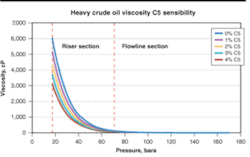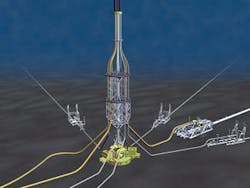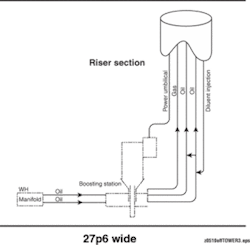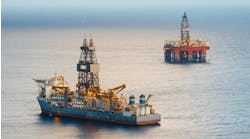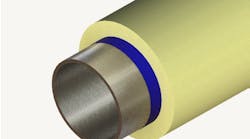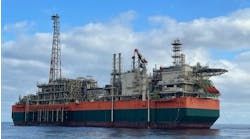Viscosity reduction and pressure boosting
Jean-Francois Saint-Marcoux
Eric Lebreton
Tony Henderson
Stolt Offshore
As deepwater exploration expands to new provinces, operators are finding increasing numbers of heavy oil reservoirs. Flow assurance challenges can be tough for conventional deepwater fields, but with heavy and waxy oils this issue becomes more complex.
The industry continues to devise solutions such as improved insulation material for flowlines and risers, gas lift techniques or low dosage hydrate inhibitors. Not all, however, can be applied to situations where heavy and waxy oil is present.
A complete understanding of these difficult crudes is necessary to ensure the correct design basis, as the effects of even small changes in both pressure and temperature can have a significant influence on fluid behavior. Detailed analysis will determine the need for specific treatment, such as:
• Viscosity reduction
• Pressure boosting
• Wax appearance temperature control
As viscosity is a major contributor to pressure losses, reducing it through injecting light hydrocarbons can prove critical in the system design. The light hydrocarbons can then be recovered from the wellstream by a topping plant located on the production facility.
Viscosity reduction is most effective in the lower pressure range occurring in the riser area. Consequently injection of light hydrocarbons works best at the bottom of the riser.
Basic overview of Stolt Offshore�s Hyperflow riser tower.
Active pressure boosting is being implemented increasingly to add energy to the fluid recovery system. Where pressure boosting is judged necessary, there are certain advantages in locating the pump station close to the bottom of the risers. These include:
• Elimination of the gas flowline and the electrical power umbilical
• The high voltage underwater distribution unit is no longer required.
Wax appearance temperature control can be effected by various means. These range from increasing the inlet separator pressure - usually resulting in lowering of the wax appearance temperature in the line - to the addition of diluents to the fluid, or injection of gas into the fluid stream. As with the viscosity solution, the best place to inject is at the base of the riser.
While the riser position may be the best place to intervene in the production system, not all riser solutions accommodate the intervention solutions discussed above. In such cases dynamic flexible or steel catenary riser systems have some disadvantages compared with the almost static towers.
Hybrid riser towers such as Stolt Offshore’s Hyperflow Riser Tower (HRT) can be designed as an extension of the production process, and do allow a variety of intervention solutions to be adopted.
The riser tower is built as an integrated assembly onshore which enables additional intervention techniques, such as injection (gas or chemical), and insulation (active or passive), to be installed, tested and pre-commissioned in a controlled environment prior to heading offshore. In the HRT’s case, the power umbilical could also be integrated within the tower onshore, a wet mateable connector being the only connection required with the pumping unit.•

